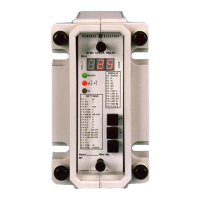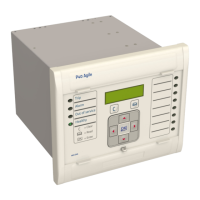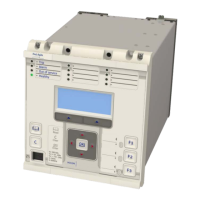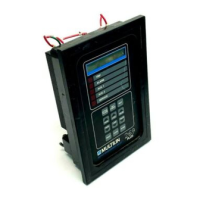Section
3. MAINTENANCE
Periodic
maintenance
is not necessary. However, periodic inspection and test is
recommended.
This should be carried out every l2
months
or more often if the relay is
operated frequently or is
mounted
in poor
environmental
conditions.
3.1 Repeat secondary injection tests 2.2.4 to prove operation, with emphasis on
contact wear and condition. Mechanical settings may be checked against those
shown in Section
4.
Section
4.
MECHANICAL
SETTINGS
4.1 General
Armature gap
measurements
should be made with the top of the feeler gauge
level with the centre line of the core.
Contact pressures are measured with a
gramme
gauge at the contact tips.
In general contact gaps and follow
through
are defined by quoting an
armature
gap
at which the tips should be just closed or just open.
The relay contact state is always defined with the relay in the unenergised
position, unless otherwise specified on the appropriate circuit diagram.
4.1.1 With the
armature
closed the clearance between the back of the
armature
and
the back stop should be
0.003"/0.008".
4.1.2 Nominal
armature
gap open: 0.060" for all
types.
Set screw in
armature
so that
armature
gap when closed is approximately
0.005"/0.010".
4.2 Contact settings
4.2.1 Normal duty make contacts
With the
armature
closed onto a 0.011" feeler gauge the make contacts should be
closed, but should be open using a 0.013" feeler gauge.
Nominal contact gap
0.060"/0.080"
4.3 Mechanical flag settings
4.3.1 Settings for self reset units
MFAC
l4/34
With the armature closed on to a 0.013" feeler gauge the flag should be free to fall,
but should not fall using an 0.018" feeler gauge. Adjustment is made to the catch
spring on the flag.
18
